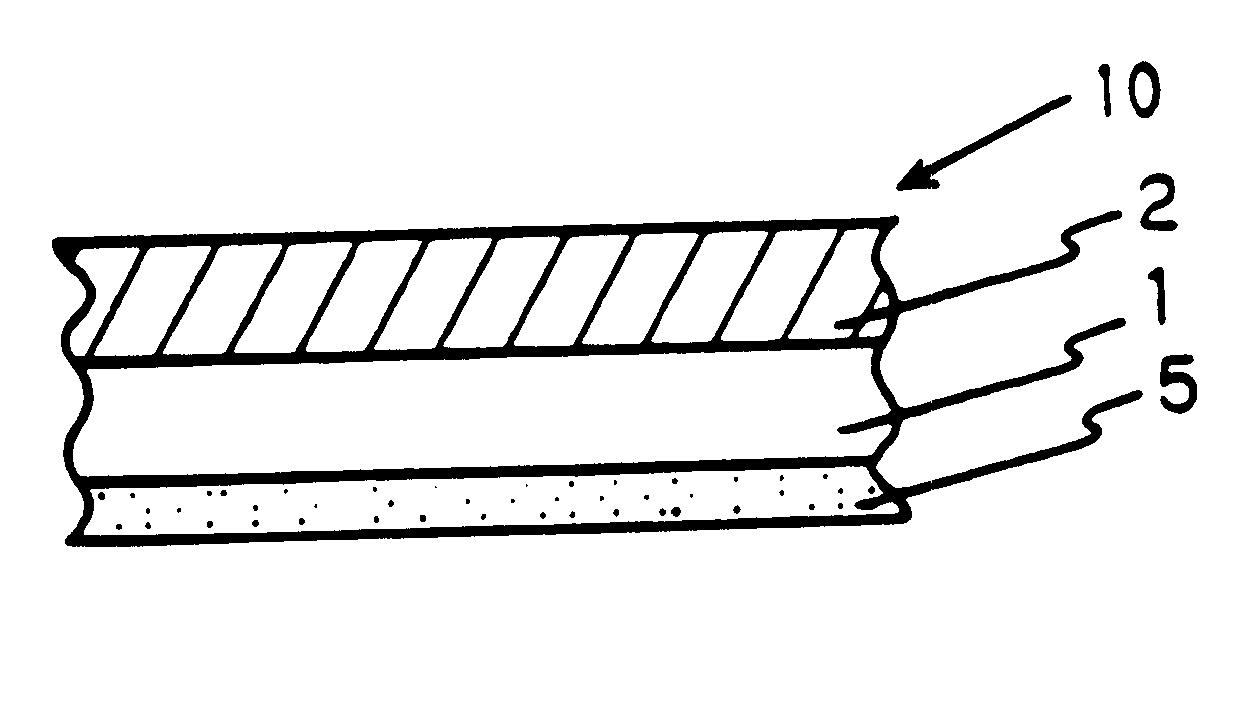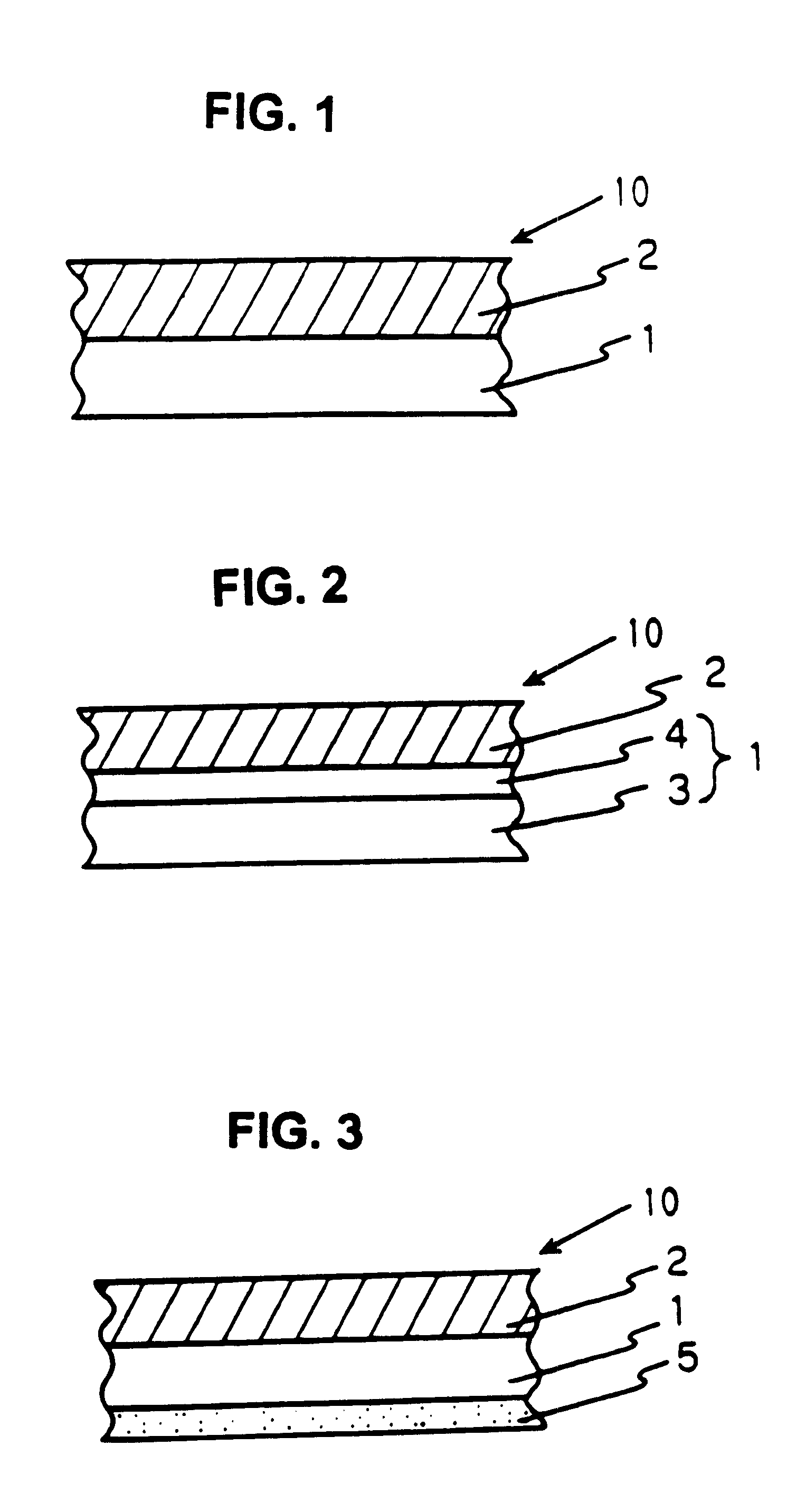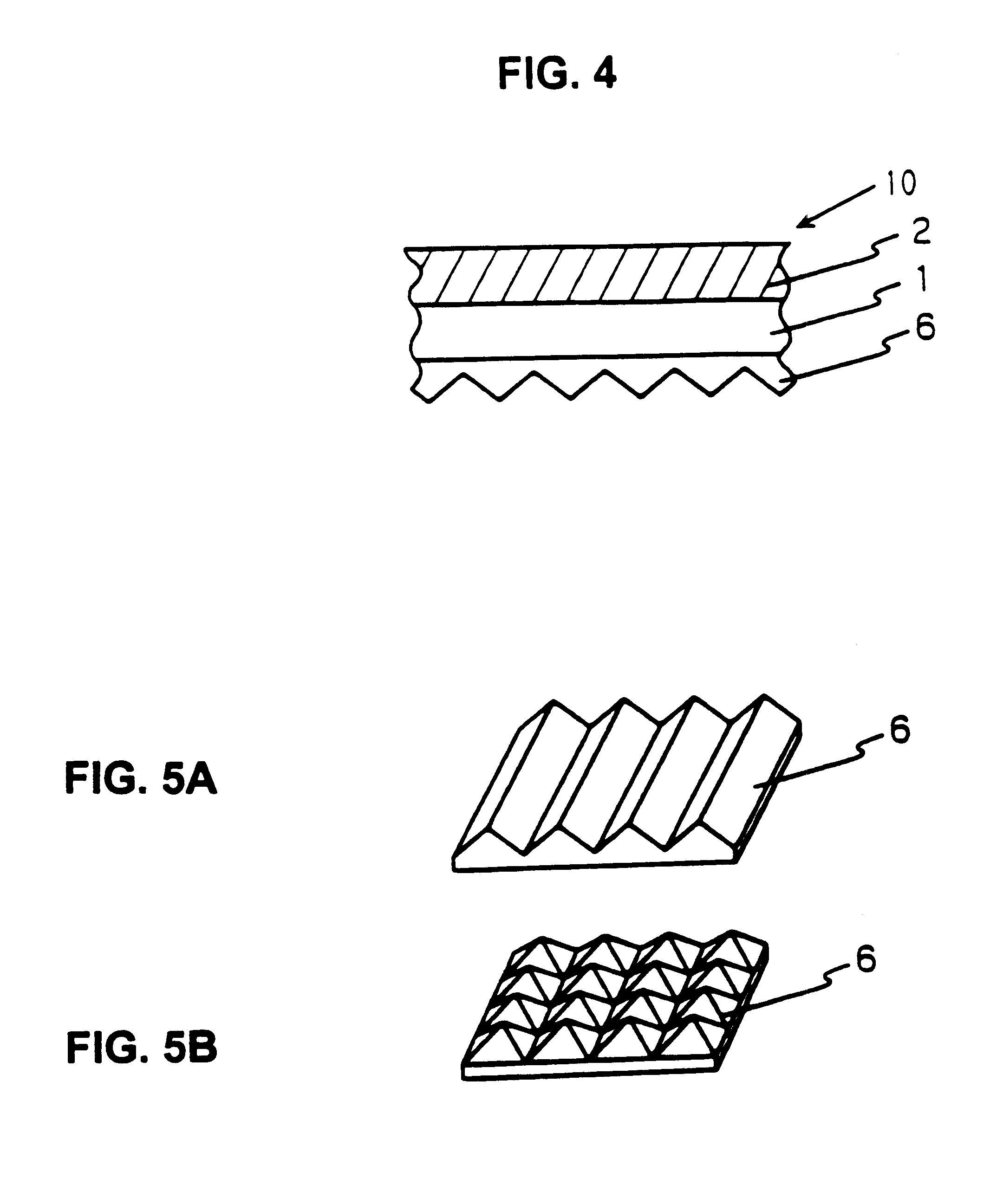Polarization light splitting film, backlight system and liquid crystal display having particular diffusion layer under optical rotation selection layer
a technology of polarization light splitting film and liquid crystal display, which is applied in the field of light splitting film, can solve the problems of reducing the efficiency of light usage, reducing the display quality, and narrow viewing angle of conventional lcds, and overcoming the disadvantage of narrow viewing angl
- Summary
- Abstract
- Description
- Claims
- Application Information
AI Technical Summary
Problems solved by technology
Method used
Image
Examples
third working example
In a third working example of the polarization light splitting film, a diffusion layer with an average thickness of 20 .mu.m (in dry) was additionally formed on the polyethyleneterephtalate film side (light receiving side) surface of the optical rotation selection layer of the second working example above. The diffusion layer was formed by coating a diffusion coat on the surface using a rolling coater. The diffusion coat was prepared mixing acrylic resin beads with the average particle diameter of 10 .mu.m as a diffusion agent with a polyester resin, an isocyanate setting agent, and a solvent. See FIG. 3 for the structure.
fourth working example
A polarization light splitting film according to a fourth working example of the present invention has an anti-reflection layer attached to the light receiving surface (polyethyleneterephtalate film surface) of the polarization light splitting film of the second working example above. The anti-reflection layer was manufactured by forming a hard coat layer with a thickness of 5 .mu.m having a high refractive index on the polyethyleneterephtalate film surface of the second working example and then forming a low refractive index layer with a thickness of 0.1 .mu.m on the hard coat layer. To form the hard coat layer, a solution of acrylate having a carboxyl group with ultra-micro particles of ZrO.sub.2 was coated on the polyethyleneterephtalate film surface and is cured with electron beam irradiation. The low refractive index layer was formed by depositing SiO.sub.2 (refractive index: about 1.46) on the hard coat layer by vapor deposition.
ninth working examples
FIFTH TO NINTH WORKING EXAMPLES
Various film bases having uneven surface profiles were manufactured to serve as a prism layer or lens layer for supporting the optical rotation selection layer, as follows.
First, an uneven surface profile was formed on a copper plated surface of a cylindrical block with a plurality of unit elements arranged at a 50 .mu.m pitch and by plating the resultant surface with chrome. The resultant cylindrical block serves as an intaglio roll for forming a film base. Each of the unit elements on the intaglio roll has a predetermined surface profile that is in a reciprocal relationship with the surface profile of each of the unit elements disposed on the film base to be manufactured. Various intaglio rolls were manufactured to form various prism layers and lens layers. Cutting processes with a diamond bit were used for forming the surface profiles of an isosceles triangle with an apex angle of about 90 degrees (corresponding to a fifth working example: see FIG. ...
PUM
| Property | Measurement | Unit |
|---|---|---|
| particle diameter | aaaaa | aaaaa |
| thickness | aaaaa | aaaaa |
| energy | aaaaa | aaaaa |
Abstract
Description
Claims
Application Information
 Login to View More
Login to View More - Generate Ideas
- Intellectual Property
- Life Sciences
- Materials
- Tech Scout
- Unparalleled Data Quality
- Higher Quality Content
- 60% Fewer Hallucinations
Browse by: Latest US Patents, China's latest patents, Technical Efficacy Thesaurus, Application Domain, Technology Topic, Popular Technical Reports.
© 2025 PatSnap. All rights reserved.Legal|Privacy policy|Modern Slavery Act Transparency Statement|Sitemap|About US| Contact US: help@patsnap.com



